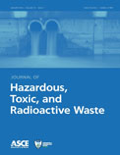
Journal of Hazardous Toxic and Radioactive Waste
Scope & Guideline
Exploring the frontiers of hazardous material science.
Introduction
Aims and Scopes
- Innovative Remediation Technologies:
Research on novel methods for the remediation of contaminated sites, including electrokinetic remediation, biosorption, and advanced oxidation processes to reduce hazardous waste. - Environmental Health Risk Assessments:
Studies assessing the health risks associated with exposure to hazardous materials, including heavy metals, pharmaceuticals, and radioactive substances, to inform public health policies. - Sustainable Waste Management Practices:
Exploration of sustainable practices for managing hazardous waste, including recycling, resource recovery, and minimizing landfill impacts. - Impact of Contaminants on Ecosystems:
Research examining the effects of hazardous waste on ecosystems, including aquatic and terrestrial environments, and strategies for mitigating these impacts. - Technological Innovations in Waste Treatment:
Development and evaluation of new technologies and materials for the treatment and disposal of hazardous waste, such as biochar, nanomaterials, and advanced filtration systems.
Trending and Emerging
- Nanotechnology in Waste Treatment:
Increasing research into the application of nanomaterials for the adsorption and degradation of pollutants, highlighting their efficiency and potential for innovative waste treatment solutions. - Integrated Waste Management Systems:
Emerging studies focus on holistic approaches that combine various waste management strategies, such as bioremediation, recycling, and energy recovery, to create sustainable systems. - Pharmaceutical and Personal Care Product Pollution:
A growing body of research addresses the environmental impact of pharmaceuticals and personal care products, focusing on their removal from wastewater and implications for public health. - Climate Change and Waste Management:
Research linking climate change impacts with waste management practices is emerging, emphasizing the need for adaptive strategies in the face of environmental challenges. - Circular Economy Models:
An increasing focus on circular economy principles within the context of hazardous waste, exploring ways to minimize waste generation and enhance resource recovery.
Declining or Waning
- Traditional Waste Disposal Methods:
Research on conventional landfill practices and incineration methods is becoming less frequent as attention shifts towards more innovative and sustainable waste management solutions. - Basic Chemical Treatment Processes:
Studies focusing solely on basic chemical treatment methods without integrating advanced technologies or sustainability considerations are declining in favor of more comprehensive approaches. - General Environmental Monitoring:
While environmental monitoring remains important, there is a decreasing emphasis on general monitoring studies without specific ties to remediation or health risk assessments.
Similar Journals

JOURNAL OF RADIOANALYTICAL AND NUCLEAR CHEMISTRY
Exploring the depths of radioanalytical research.JOURNAL OF RADIOANALYTICAL AND NUCLEAR CHEMISTRY, published by Springer, serves as a vital platform for the dissemination of research in the fields of analytical chemistry, nuclear science, and radiochemistry. With an ISSN of 0236-5731 and an E-ISSN of 1588-2780, this journal has been a beacon of innovation and scholarly communication since its inception, transitioning from converged years of 1977-1979 to its current continuity from 1984 to 2024. Positioned in the Q3 category for analytical chemistry and other related fields such as health, toxicology, and nuclear engineering, it boasts significant standings in the Scopus rankings, reflecting its relevance and impact within these disciplines. The journal emphasizes open access, encouraging broader accessibility to quality research, which is critical for students, professionals, and ongoing global scientific discussions. As a leader in its domain, the JOURNAL OF RADIOANALYTICAL AND NUCLEAR CHEMISTRY is committed to advancing the understanding of radioactive materials, environmental safety, and health applications, ensuring its readers remain at the forefront of emerging trends and discoveries.

ACS ES&T Engineering
Innovating for a Sustainable Future in Engineering and Chemistry.ACS ES&T Engineering, published by the American Chemical Society, stands as a leading journal in the realm of Chemical Engineering, Environmental Chemistry, and related fields, with a notable Impact Factor indicative of its scholarly influence. Emerging from 2021 with a vision to address contemporary challenges in engineering and environmental health, this Journal not only covers critical studies in Chemical Engineering but also excels in areas such as Process Chemistry and Technology, aligning with its Q1 status across several categories in 2023. With exceptional rankings in Scopus, including a percentile rank in the 90th for Chemical Health and Safety, it offers a significant platform for researchers, educators, and practitioners to disseminate innovative research and practices. Although the journal maintains a subscription model, its commitment to rigorous peer review and high-quality content ensures that readers gain access to pivotal findings essential for advancing knowledge and practice in a rapidly evolving scientific landscape. For those dedicated to tackling global engineering challenges, ACS ES&T Engineering is an invaluable resource.

Recycling
Empowering global knowledge in resource recovery.Recycling is a renowned international open access journal published by MDPI that has been dedicated to advancing the field of recycling and waste management since its inception in 2015. With a focus on innovative technologies, management practices, and policy frameworks, this journal serves as a platform for researchers, professionals, and students who are eager to explore sustainable solutions in resource recovery and material efficiency. Based in beautiful Basel, Switzerland, Recycling boasts an impressive impact with a 2023 ranking of Q2 in Management, Monitoring, Policy and Law and Q1 in Materials Science (Miscellaneous), signifying its pivotal role in driving forward-thinking research in these critical areas. The journal is indexed in Scopus, with strong performance metrics highlighting its relevance and quality, such as a rank of #42 in Waste Management and Disposal. As an open access publication, Recycling promotes the dissemination of knowledge, ensuring that groundbreaking research is freely available to a global audience. Whether you are a seasoned researcher or a student eager to contribute to the discourse surrounding sustainable practices, Recycling provides a vital resource for those committed to the future of waste management and environmental sustainability.
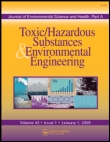
JOURNAL OF ENVIRONMENTAL SCIENCE AND HEALTH PART A-TOXIC/HAZARDOUS SUBSTANCES & ENVIRONMENTAL ENGINEERING
Bridging environmental engineering and public health for a sustainable future.JOURNAL OF ENVIRONMENTAL SCIENCE AND HEALTH PART A-TOXIC/HAZARDOUS SUBSTANCES & ENVIRONMENTAL ENGINEERING, published by TAYLOR & FRANCIS INC, stands at the forefront of research in the dynamic fields of environmental science and public health. With an ISSN of 1093-4529 and an E-ISSN of 1532-4117, this journal serves as a pivotal platform for disseminating significant findings regarding toxic substances and their impact on the environment and human health. It is categorized in the Q3 quartile for both Environmental Engineering and Medicine in 2023, showcasing its relevance within these disciplines. Researchers will find valuable insights in the 90th rank among 197 in the Environmental Science and Engineering category, placing it in the 54th percentile among its peers. While access options remain traditional rather than open-access, the journal is dedicated to serving as an essential resource for professionals and academics engaged in understanding the intricate connections between hazardous materials and environmental safety. The journal has consistently published critical research since its inception in 1978 and is committed to advancing knowledge up to 2024, making it a crucial venue for ongoing discussions and developments in environmental health.

International Journal of Environmental Science and Technology
Exploring innovative pathways in environmental science.International Journal of Environmental Science and Technology, published by SPRINGER, stands as a premier platform for the dissemination of cutting-edge research in the fields of environmental science, technology, and engineering. With an impressive scope spanning from 2005 to 2024, this journal serves as a vital resource for academic and professional communities engaged in tackling pressing environmental challenges. It boasts a strong reputation, evidenced by its Q1 ranking in Agricultural and Biological Sciences and solid placements in Environmental Chemistry and Engineering. Researchers searching for high-impact studies will find the journal's contributions significant, as reflected in its rankings within Scopus: 34th percentile in Agricultural and Biological Sciences and notable standings in Environmental Engineering and Chemistry. Although the journal is not currently an Open Access resource, it maintains a commitment to academic rigor and innovation, making it indispensable for those devoted to advancing knowledge in environmental sustainability and technology.

Detritus
Pioneering research in environmental chemistry and engineering.Detritus, an esteemed open-access journal published by CISA PUBLISHER since 2018, serves as a vital platform for the dissemination of innovative research in the fields of Environmental Chemistry, Environmental Engineering, and Waste Management and Disposal. Based in Padova, Italy, the journal aims to foster scholarly communication and collaboration among researchers, professionals, and students dedicated to advancing our understanding of environmental challenges and solutions. With its open-access model, Detritus ensures that high-quality research is freely available, bridging the information gap within the scientific community. While currently categorized in the Q3 quartile across multiple environmental science disciplines, the journal is poised to further enhance its visibility and impact, contributing significantly to pressing global issues such as waste reduction and sustainable resource management. As the journal continues to evolve, it encourages submissions that advance theory and application in these critical areas.
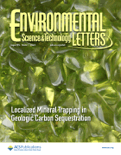
Environmental Science & Technology Letters
Advancing knowledge for a sustainable future.Environmental Science & Technology Letters, published by the American Chemical Society, stands as a premier journal in the realm of environmental science and technology, focusing on pivotal studies that address pressing environmental challenges. With an impressive Q1 ranking in multiple categories including Ecology, Environmental Chemistry, and Pollution, this journal maintains a position of excellence within its field, achieving Scopus ranks that place it in the top percentile of Environmental Science disciplines. Although not open access, Environmental Science & Technology Letters offers vital insights and cutting-edge research that contribute significantly to the understanding and management of environmental issues. The journal’s objectives include disseminating ground-breaking findings and promoting discussions that lead to sustainable solutions. With convergence from 2013 to 2024, it continues to serve as an essential resource for researchers, professionals, and students committed to advancing knowledge and innovation in environmental science.
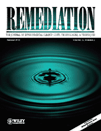
Remediation-The Journal of Environmental Cleanup Costs Technologies & Techniques
Exploring Technologies that Shape a Greener FutureRemediation: The Journal of Environmental Cleanup Costs Technologies & Techniques is a pivotal publication in the field of environmental engineering, pollution management, and waste disposal. Published by Wiley since 1990, this journal has established itself as a significant resource for researchers and practitioners dedicated to environmental remediation technologies and cost-effective cleanup techniques. With an impressive scope that spans over three decades and continues to evolve until 2024, the journal is recognized for its valuable contributions, reflected in its Q2 ranking in key categories such as Environmental Engineering, Pollution, and Waste Management and Disposal. Although not currently open access, it offers critical insights and scholarly articles that adhere to rigorous peer-review standards, making it a leading forum for sharing innovative research and practical applications aimed at addressing environmental cleanup challenges. Positioned within the competitive landscape of Scopus rankings, it attracts attention from a global audience, ensuring that its findings resonate within academic, governmental, and industrial domains. Researchers, professionals, and students alike will find Remediation an indispensable tool for advancing knowledge and fostering collaboration in environmental sustainability.

Waste Management
Leading the way in sustainable waste practices and research.Waste Management, published by Pergamon-Elsevier Science Ltd, stands as a premier journal in the field of waste management and disposal, reflecting its esteemed position with an impressive 2023 impact factor and ranking in the Q1 category. This journal is pivotal for researchers, professionals, and students, offering a rich repository of innovative studies and methodologies aimed at addressing the increasingly critical challenges in waste management. With a dedicated focus on advancing knowledge and practice in environmental science, it encompasses a wide array of topics from waste reduction techniques to sustainable disposal strategies. Founded in 1983, Waste Management continues to be at the forefront of academic discourse, providing invaluable insights into both theoretical frameworks and practical applications, thus playing a vital role in shaping the future of waste disposal practices worldwide.
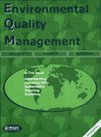
ENVIRONMENTAL QUALITY MANAGEMENT
Innovating Insights for a Healthier PlanetENVIRONMENTAL QUALITY MANAGEMENT is a respected journal published by WILEY, focusing on interdisciplinary studies that merge environmental science with public health, management, policy, and law. Since its inception in 1991, this journal has provided a platform for researchers and practitioners to share innovative insights and advancements in understanding environmental quality and its impacts on human health and the ecosystem. With an ISSN of 1088-1913 and an E-ISSN of 1520-6483, it holds a significant position in the academic community, evidenced by its presence in the Q3 quartile across several categories, including Management, Monitoring, Policy and Law, as well as Pollution and Waste Management. Although it is not an open-access journal, it continues to be a vital resource for those in the environmental sector, offering robust evaluations and discussions that advance knowledge and foster improved practices. With Scopus rankings demonstrating its relevance among other titles in the field, ENVIRONMENTAL QUALITY MANAGEMENT plays a crucial role in shaping discourse and informing policy in an increasingly vital area of study.